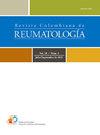拉丁美洲原发性膜性肾病:一项多中心研究
Q3 Health Professions
引用次数: 0
摘要
原发性膜性肾病(PMN)提出了一个治疗挑战,需要有效的治疗方法。本研究旨在评估PMN患者对三种治疗策略的反应:传统Ponticelli方案,每月静脉注射环磷酰胺和钙调磷酸酶抑制剂,为期6 - 12个月的随访。目的:本研究评估通过肾活检诊断的原发性膜性肾病(PMN)患者,在6 - 12个月的随访中检查他们对三种治疗方案的反应:传统Ponticelli方案,每月静脉注射环磷酰胺和钙调磷酸酶抑制剂。材料与方法对3个拉丁美洲国家(阿根廷、哥伦比亚、玻利维亚)的110例经肾活检诊断为PMN的患者进行了5年多中心回顾性分析。排除29例记录不完整或随访12个月的患者,患者按治疗分组:Ponticelli,静脉环磷酰胺和钙调磷酸酶抑制剂。根据KDIGO 2020指南,比较一年后完全缓解的临床、组织学和实验室特征。进行单因素和多因素分析。对口服环磷酰胺方案与钙调磷酸酶抑制剂方案的缓解率和不良反应进行了比较分析。结果男性患病率最高,为60.5%,平均年龄50.3±14岁,以II期为主(53.1%),风险分布(中度46.9%,重度53.1%);CP IV显示血尿增多,年龄增大,白蛋白血症减少。与CP PO(52%)和CNI(79%)相比,CP IV在12个月时显示出更高的完全缓解趋势(83%),但没有达到统计学意义(p = .08)。CP IV组(6.7%)和CNI组(4.2%)的并发症明显低于CP PO组(41%),OR为9.62,p值为0.006。这些发现强调了原发性膜性肾病患者治疗方式、缓解率和并发症之间的微妙关系。结论在6个月和12个月完全缓解方面,传统Ponticelli方案与静脉注射环磷酰胺和钙调磷酸酶抑制剂没有显著差异。然而,与其他亚组相比,Ponticelli组表现出更高的累积环磷酰胺剂量和更多的感染并发症。本文章由计算机程序翻译,如有差异,请以英文原文为准。
Primary membranous nephropathy in Latin America: A multicentre study
Introduction
Primary membranous nephropathy (PMN) poses a therapeutic challenge, necessitating effective treatment approaches. This study aims to assess the response of PMN patients to three treatment strategies: traditional Ponticelli scheme, monthly intravenous cyclophosphamide, and calcineurin inhibitors over a 6–12-month follow-up.
Objective
This study evaluates primary membranous nephropathy (PMN) patients diagnosed by renal biopsy, examining their response to three treatment schemes over a 6–12-month follow-up: traditional Ponticelli scheme, monthly intravenous cyclophosphamide, and calcineurin inhibitors.
Materials and methods
A multicentre retrospective analysis in three Latin American countries (Argentina, Colombia, Bolivia) encompassing 110 PMN patients diagnosed by renal biopsy over 5 years. Excluding 29 with incomplete records or a 12-month follow-up, patients were grouped by treatment: Ponticelli, intravenous cyclophosphamide, and calcineurin inhibitors. Clinical, histological, and laboratory features were compared for complete remission at one year according to KDIGO 2020 guidelines. Univariate and multivariate analyses were conducted. A comparative analysis of remission rates and adverse effects between the oral cyclophosphamide regimen versus calcineurin inhibitors was performed.
Results
Male sex showed the highest prevalence at 60.5%, with an average age of 50.3 ± 14, mainly in stage II (53.1%), and risk distribution (46.9% moderate, 53.1% high). CP IV showed higher haematuria, older age, and lower albuminaemia. While CP IV showed a trend toward higher complete remission (83%) at 12 months compared to CP PO (52%) and CNI (79%), statistical significance (p = .08) was not reached. Complications were significantly lower with CP IV (6.7%) and CNI (4.2%) than with CP PO (41%) with an OR 9.62 and a p-value of .006. These findings underscore the nuanced relationship between treatment modalities, remission rates, and complications in primary membranous nephropathy patients.
Conclusion
The traditional Ponticelli scheme did not significantly differ from intravenous cyclophosphamide and calcineurin inhibitors in achieving complete remission at 6 and 12 months. However, the Ponticelli group exhibited higher cumulative cyclophosphamide doses and more infectious complications compared to other subgroups.
求助全文
通过发布文献求助,成功后即可免费获取论文全文。
去求助
来源期刊

Revista Colombiana de Reumatologia
Medicine-Rheumatology
CiteScore
0.80
自引率
0.00%
发文量
92
期刊介绍:
The Colombian Journal of Rheumatology (Revista Colombiana de Reumatología) is the official organ of the Colombian Association of Rheumatology (Asociación Colombiana de Reumatología) and the Central American, Caribbean and Andean Association of Rheumatology (Asociación Centroamericana Caribe Andina de Reumatología) - ACCA. It was created in December 1993 with the purpose of disseminating scientific information derived from primary and secondary research and presenting cases coming from the practice of Rheumatology in Latin America. Since its foundation, the Journal has been characterized by its plurality with subjects of all rheumatic and osteomuscular pathologies, in the form of original articles, historical articles, economic evaluations, and articles of reflection and education in Medicine. It covers an extensive area of topics ranging from the broad spectrum of the clinical aspects of rheumatology and related areas in autoimmunity (both in pediatric and adult pathologies), to aspects of basic sciences. It is an academic tool for the different members of the academic and scientific community at their different levels of training, from undergraduate to post-doctoral degrees, managing to integrate all actors inter and trans disciplinarily. It is intended for rheumatologists, general internists, specialists in related areas, and general practitioners in the country and abroad. It has become an important space in the work of all rheumatologists from Central and South America.
 求助内容:
求助内容: 应助结果提醒方式:
应助结果提醒方式:


